Abstract
The importance of microniches for the survival of introduced Rhizobium leguminosarum biovar trifolii cells was studied in sterilized and recolonized sterilized loamy sand and silt loam. The recolonized soils contained several species of soil microorganisms but were free of protozoa. Part of these soil samples was inoculated with the flagellate Bodo saltans, precultured on rhizobial cells. The introduced organisms were enumerated in different soil fractions by washing the soil, using a standardized washing procedure. With this method, free organisms and organisms associated with soil particles or aggregates >50 μm were separated. The total number of rhizobia was influenced slightly (silt loam) or not at all (loamy sand) by the recolonization with microorganisms or by the addition of flagellates alone. However, when both flagellates and microorganisms were present, numbers of rhizobia decreased drastically. This decrease was more than the sum of both effects separately. Nevertheless, populations of rhizobia were still higher than in natural soil. In the presence of flagellates, higher percentages of rhizobia and other microorganisms were associated with soil particles or aggregates >50 μm than in the absence of flagellates. In recolonized soils, however, the percentages of particle-associated rhizobia were lower than in soils not recolonized previous to inoculation. Thus, the presence of other microorganisms hindered rhizobial colonization of sites where they are normally associated with soil particles or aggregates.
Full text
PDF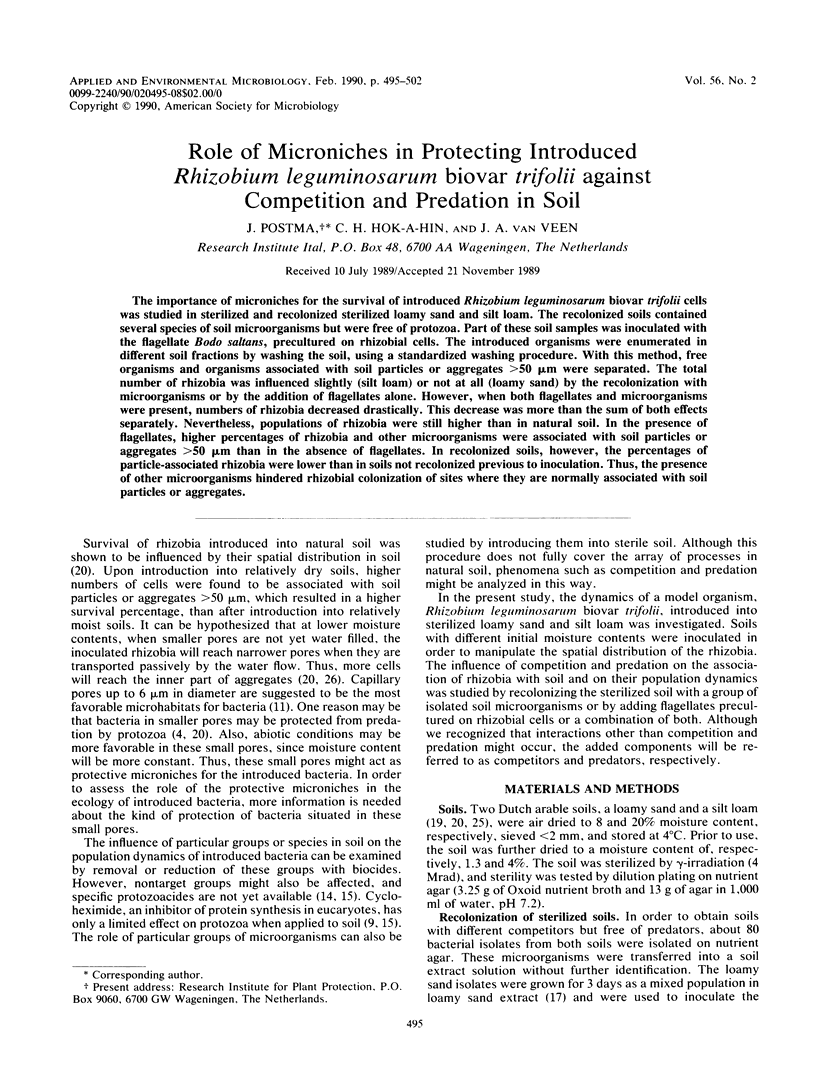
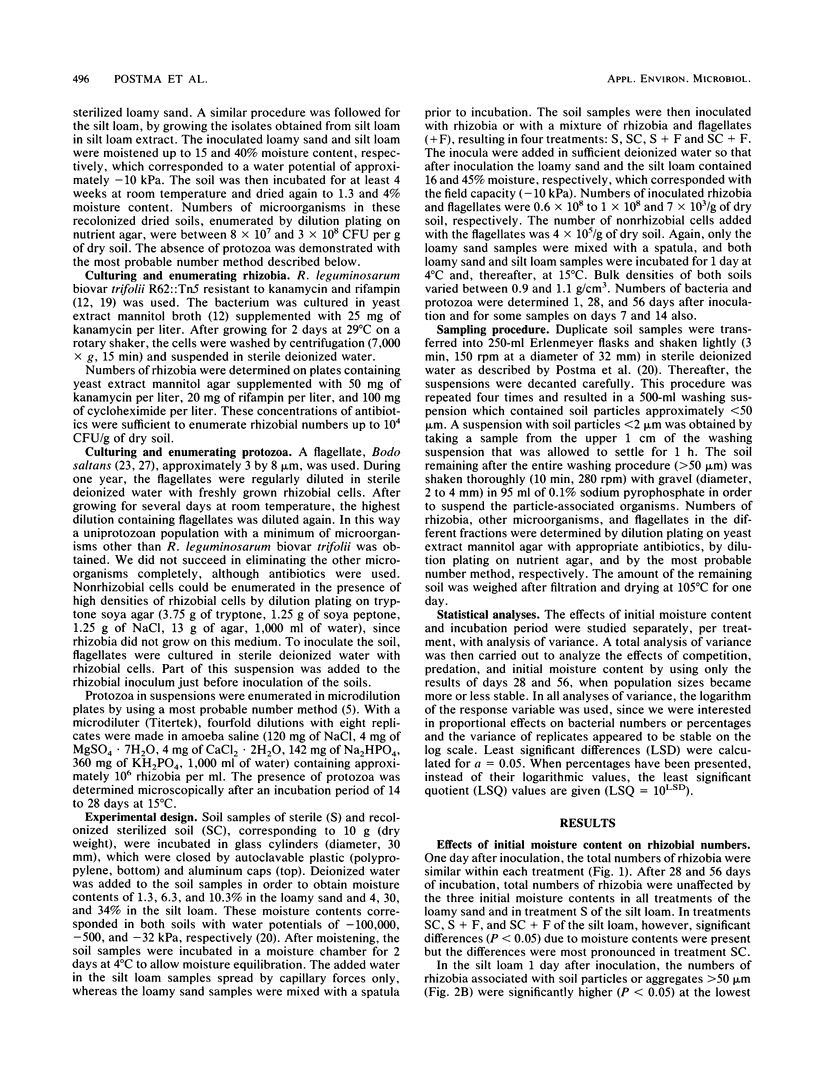
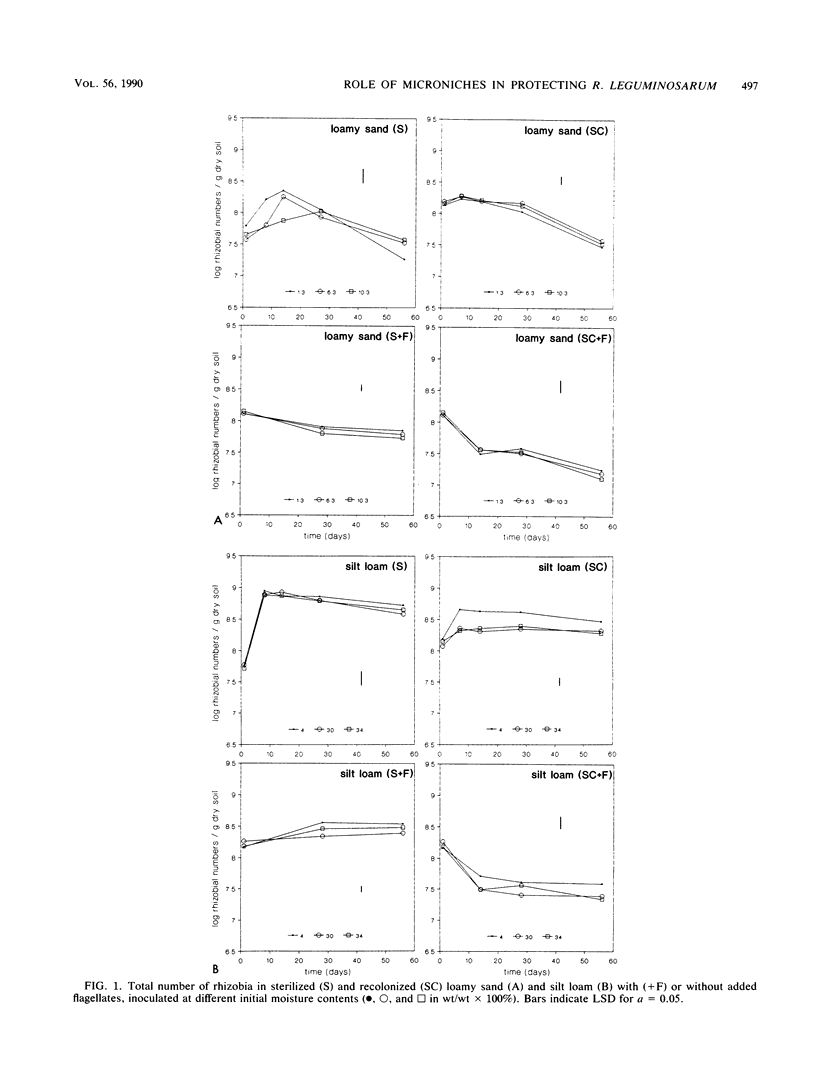
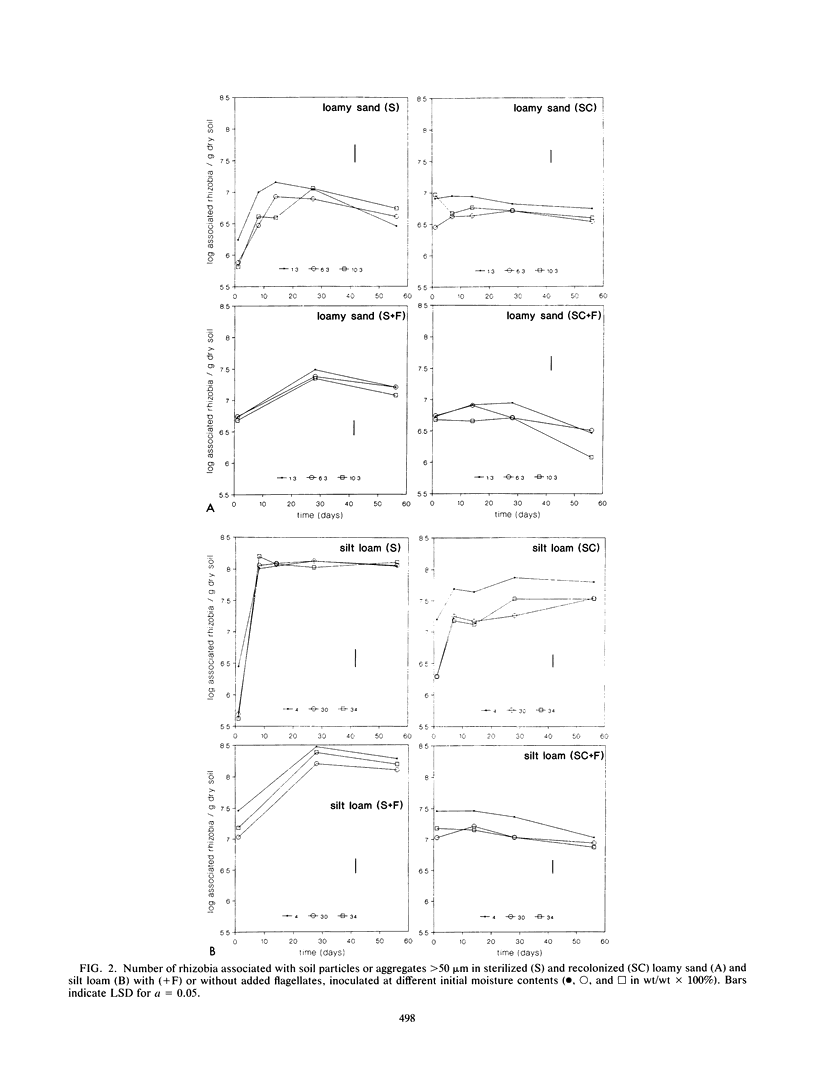
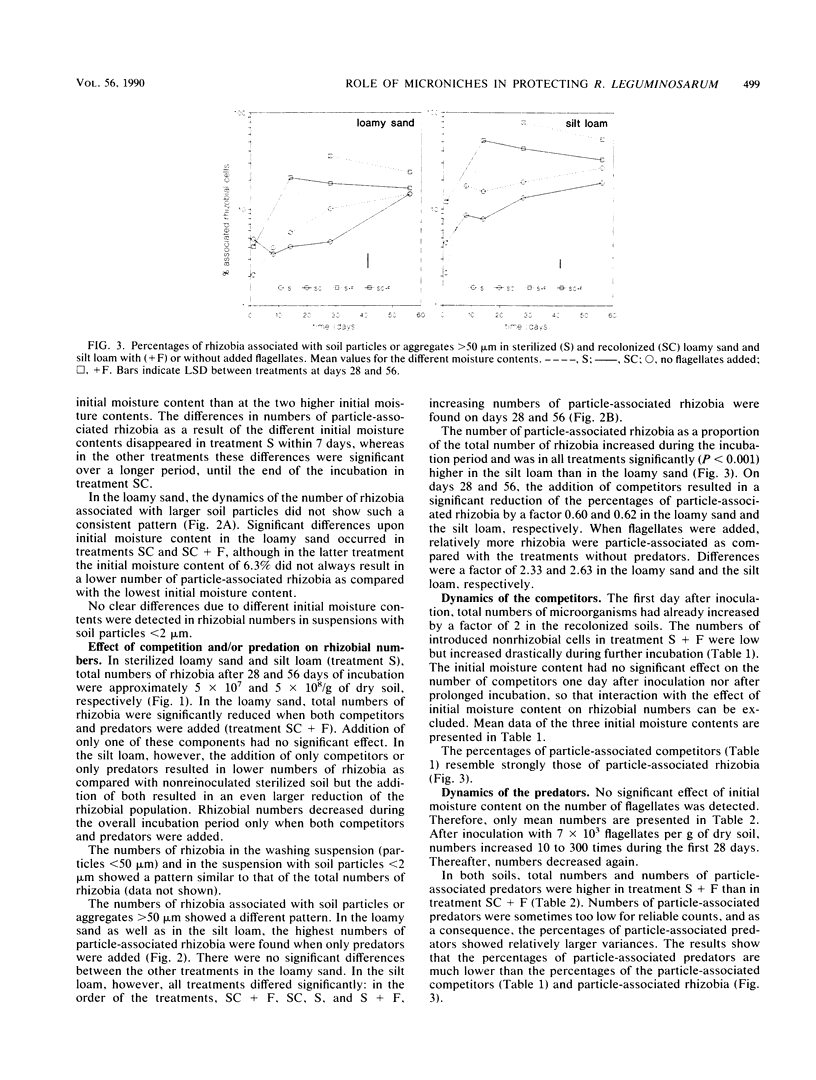
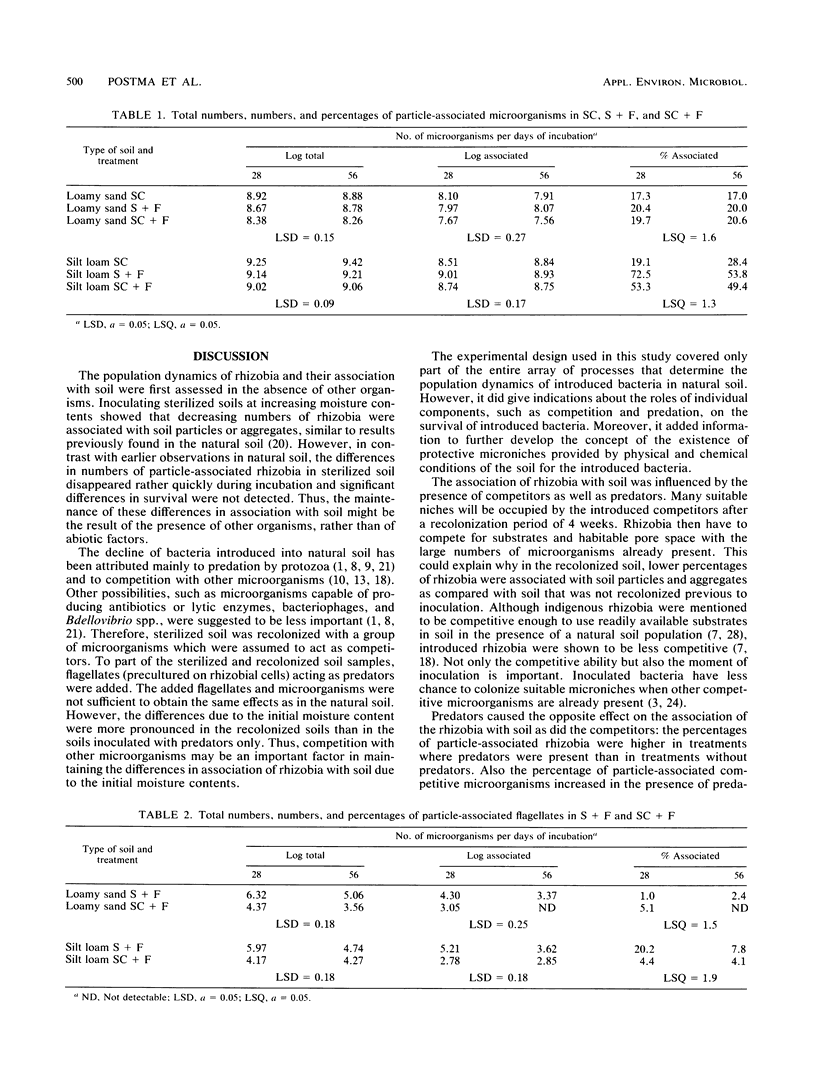
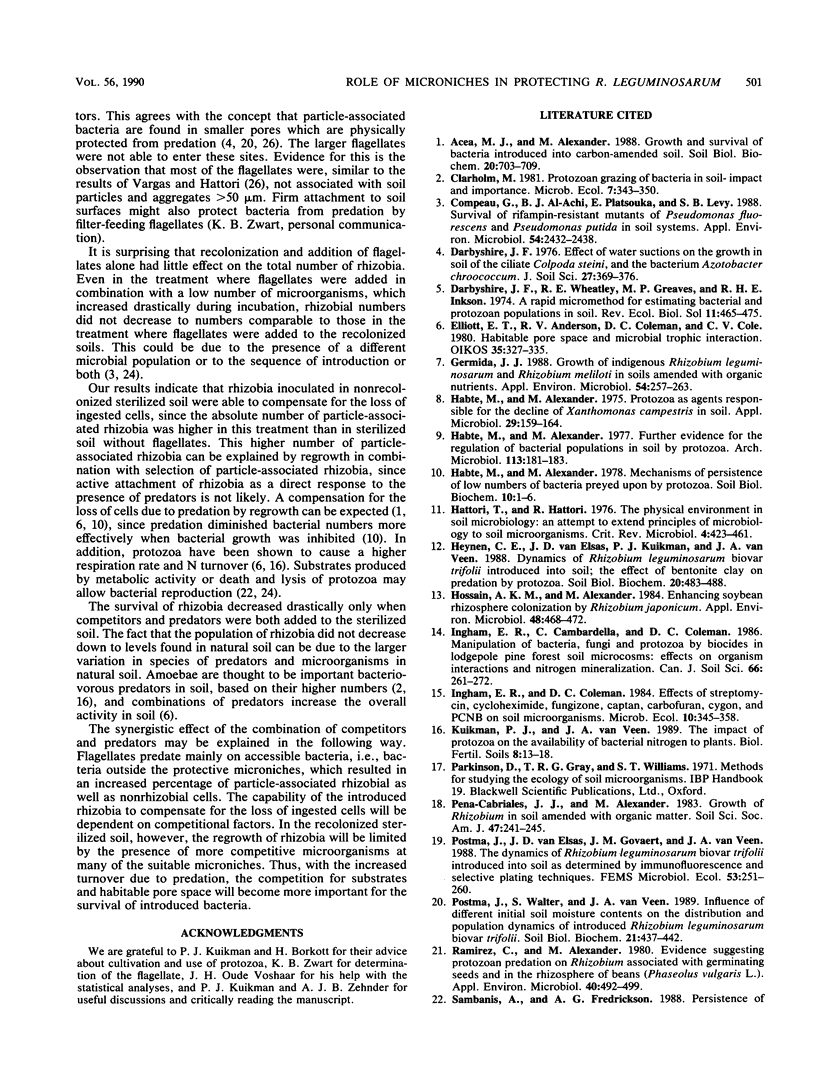
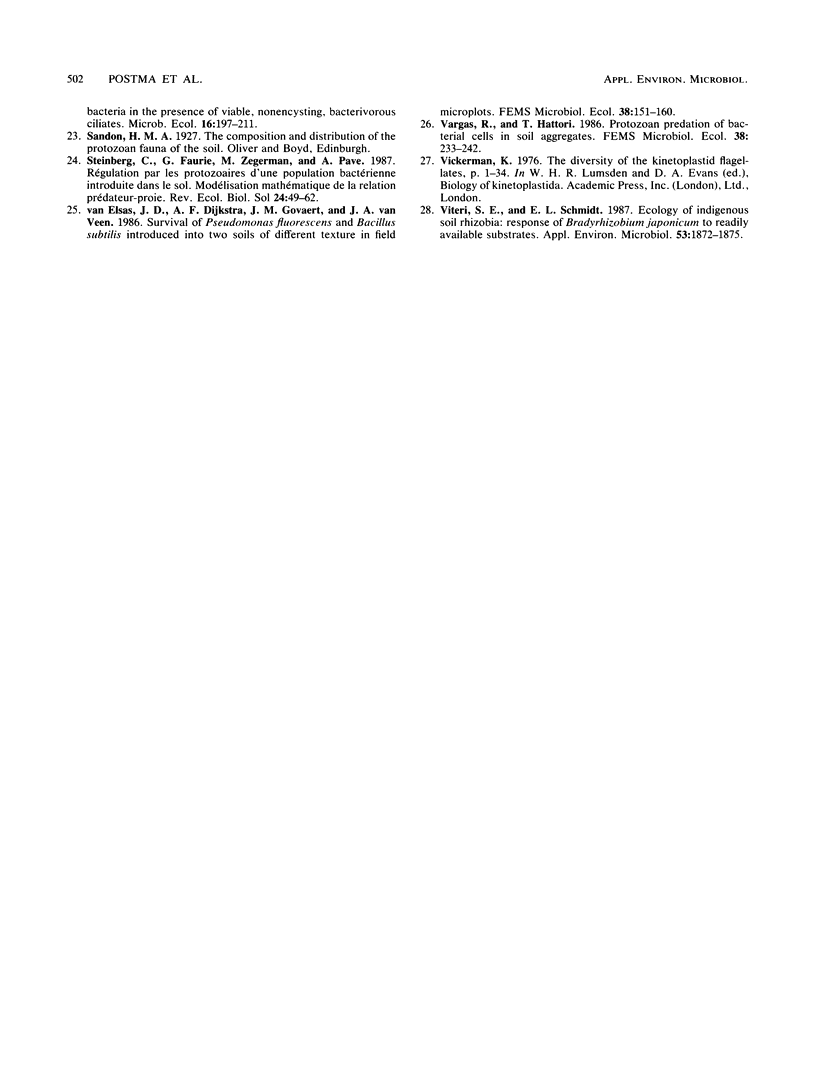
Selected References
These references are in PubMed. This may not be the complete list of references from this article.
- Compeau G., Al-Achi B. J., Platsouka E., Levy S. B. Survival of rifampin-resistant mutants of Pseudomonas fluorescens and Pseudomonas putida in soil systems. Appl Environ Microbiol. 1988 Oct;54(10):2432–2438. doi: 10.1128/aem.54.10.2432-2438.1988. [DOI] [PMC free article] [PubMed] [Google Scholar]
- Germida James J. Growth of Indigenous Rhizobium leguminosarum and Rhizobium meliloti in Soils Amended with Organic Nutrients. Appl Environ Microbiol. 1988 Jan;54(1):257–263. doi: 10.1128/aem.54.1.257-263.1988. [DOI] [PMC free article] [PubMed] [Google Scholar]
- Habte M., Alexander M. Further evidence for the regulation of bacterial populations in soil by protozoa. Arch Microbiol. 1977 Jun 20;113(3):181–183. doi: 10.1007/BF00492022. [DOI] [PubMed] [Google Scholar]
- Habte M., Alexander M. Protozoa as agents responsible for the decline of Xanthomonas campestris in soil. Appl Microbiol. 1975 Feb;29(2):159–164. doi: 10.1128/am.29.2.159-164.1975. [DOI] [PMC free article] [PubMed] [Google Scholar]
- Hattori T., Hattori R. The physical environment in soil microbiology: an attempt to extend principles of microbiology to soil microoganisms. CRC Crit Rev Microbiol. 1976 May;4(4):423–461. doi: 10.3109/10408417609102305. [DOI] [PubMed] [Google Scholar]
- Hossain A. K., Alexander M. Enhancing Soybean Rhizosphere Colonization by Rhizobium japonicum. Appl Environ Microbiol. 1984 Sep;48(3):468–472. doi: 10.1128/aem.48.3.468-472.1984. [DOI] [PMC free article] [PubMed] [Google Scholar]
- Ramirez C., Alexander M. Evidence Suggesting Protozoan Predation on Rhizobium Associated with Germinating Seeds and in the Rhizosphere of Beans (Phaseolus vulgaris L.). Appl Environ Microbiol. 1980 Sep;40(3):492–499. doi: 10.1128/aem.40.3.492-499.1980. [DOI] [PMC free article] [PubMed] [Google Scholar]
- Viteri S. E., Schmidt E. L. Ecology of Indigenous Soil Rhizobia: Response of Bradyrhizobium japonicum to Readily Available Substrates. Appl Environ Microbiol. 1987 Aug;53(8):1872–1875. doi: 10.1128/aem.53.8.1872-1875.1987. [DOI] [PMC free article] [PubMed] [Google Scholar]


